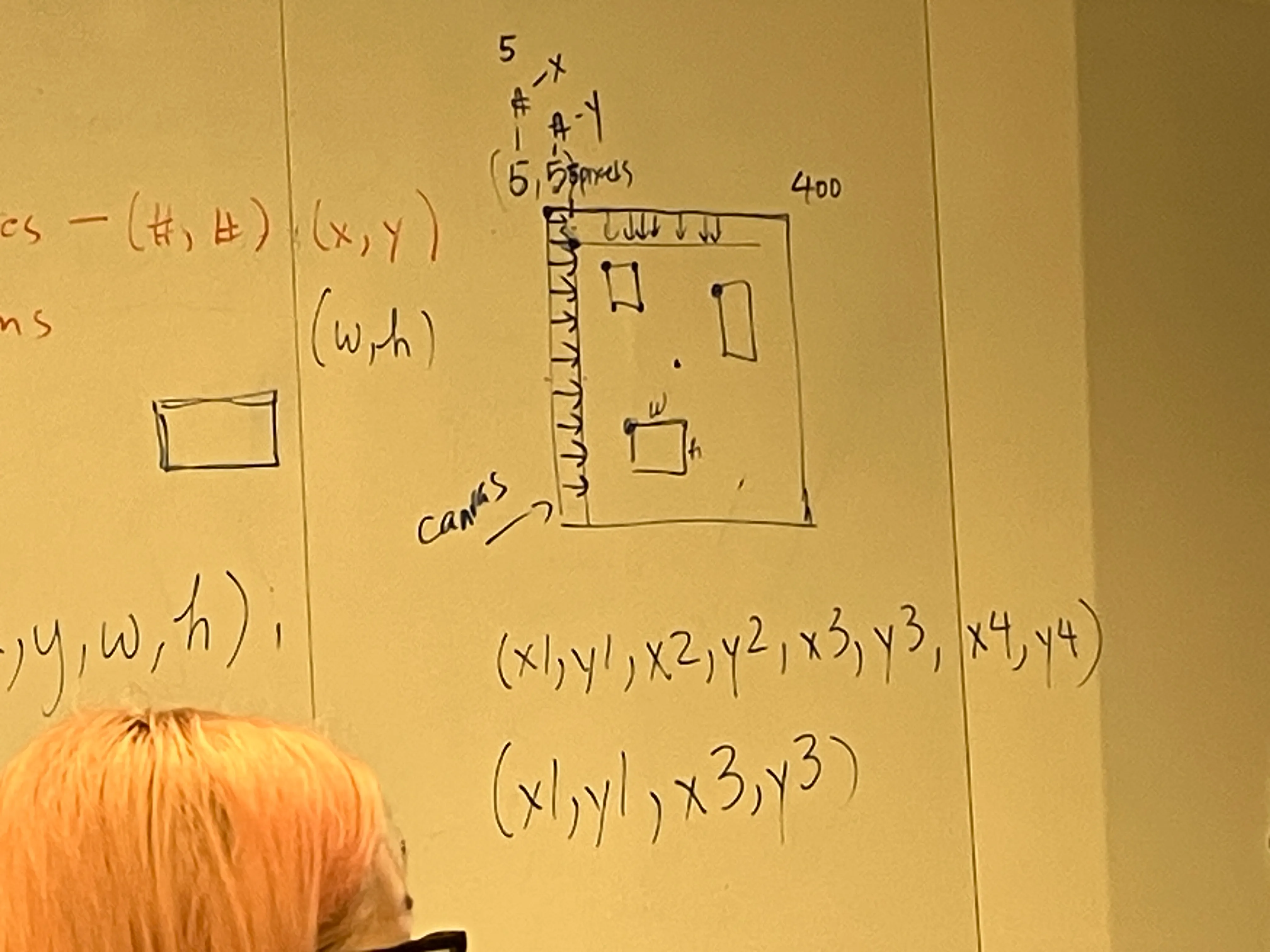notes:
-
programming is human-invented, and not a ‘naturally-occurring’ science.
-
discussed a a pretty definition of wonder.
-
discussed how computer-science programs look at numbers for the sake of numbers (chasing efficiency), while art-school looks at what these numbers could mean for people (creative-potential).
-
mimi asked chat-gpt to draw a {adjective} rectangle. for example, a lonely rectangle. it failed, and becomes a data-point for my case against ai.
-
she discussed the process of writing code as: make something super specific > abstract > write it in code. for example:
 in this image, we realise that the most specific way to draw a rectangle is to give 8 coordinates (for all 4 points). however, you can abstract this specificity to give only the diagonal points (since a rectangle is a regular polygon).
in this image, we realise that the most specific way to draw a rectangle is to give 8 coordinates (for all 4 points). however, you can abstract this specificity to give only the diagonal points (since a rectangle is a regular polygon).i thought this ‘workflow’ would be quite helpful, even while trying to solve more complicated problems.
-
structure while defining a function does not matter. for example:
function draw(){
background (220);
}
function setup(){
createCanvas (100,100);
}
-
this, while looking unintuitive, does the same thing it would even if inverted. this is because p5 calls it in a sequence, and that’s what matters — calling, and not defining.
-
think of setup as setting up an environment — what variables in my environment must remain constant?
note on formatting-difference from the rest of the posts:
for some reason, markdown converts my list above (of bullet points) to text, every time i add an image / code block. hence the formatting-difference. i might just move to paragraphs as the standard now.